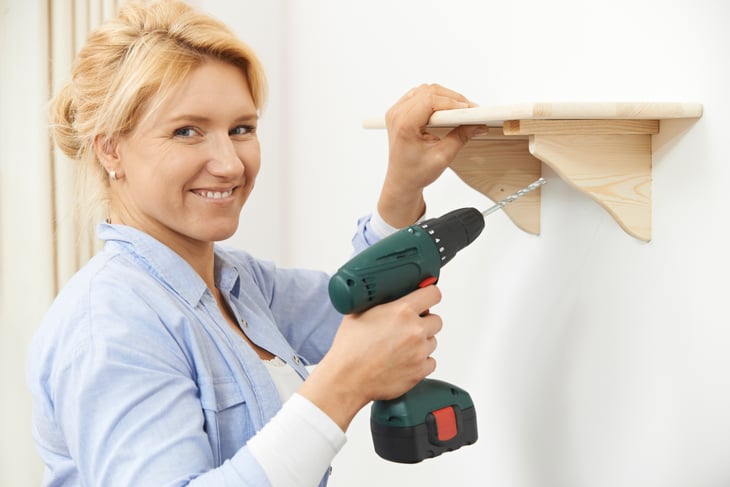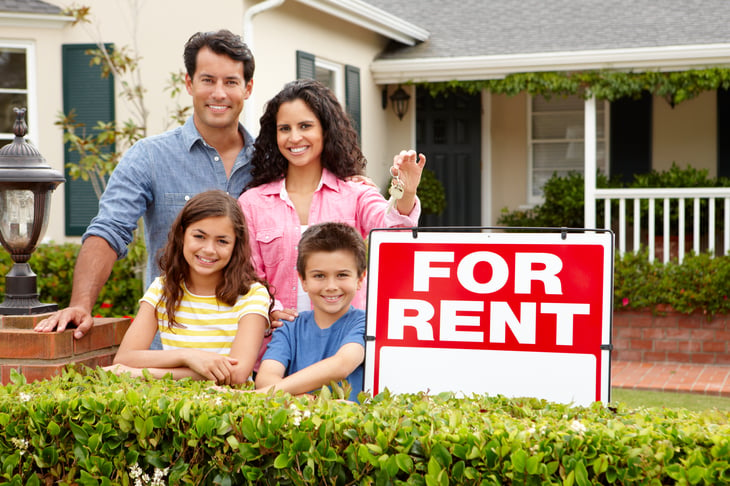
This story originally appeared on The Penny Hoarder.
Buying a home is a visceral experience.
Every house you walk into or click through online brings visions: future meals cooked in the kitchen, friends in the living room, kids playing in the backyard.
These feelings are so strong that they can easily cloud your judgment when it’s time to put in an offer.
So how should you view your first home purchase?
Chad Carson, author of "Retire Early with Real Estate,"has some ideas.
Chad started investing in real estate more than 15 years ago — before the housing bubble burst. He persevered during the downturn and benefited from the years that followed.
Now he shows people how to buy houses like an investor and use real estate to reach financial independence — even if the only property in your portfolio is your own home.
How to Buy Your Home Like an Investor

Americans with a mortgage spend over 21% of their income on house-related costs, making it many people’s largest expense.
Housing has the largest margin for reducing costs but nobody tries to decrease their mortgage payment when shaving dollars off their budget.
But Chad figured out a way around it.
Instead of looking at his first home as a dream purchase, he looked at it in the ways he looked at other investment opportunities. And it resulted in his getting paid to live in his home.
1. House Hacking

Instead of the cute white picket fence, or a starter condo, Chad’s first home was a fourplex in Clemson, South Carolina.
Chad calls this method “house hacking.” It’s simply living in a residence that can also produce income.
The fourplex had two units on the first floor and two on the second. It was structurally sound, near a university and an overall eyesore. He fixed it up, lived in one of the downstairs units and rented out the other three.
He knew that you can get a conventional owner-occupied mortgage for housing up to four units, so he was able to take advantage of that and get a 30-year fixed mortgage at a low interest rate.
So how much did it cost to live there? After expenses, Chad was actually getting paid $95 per month to live in his unit.
He totally freed up that 21% of his income that would have typically been spent on housing.
While Chad house hacked with four units, it can also be done with a duplex or triplex or even a single-family home.
If you don’t have an entire unit to rent out, you can:
- Rent out a spare bedroom to a friend or on Airbnb.
- Buy a house with an extra storage unit and rent that out.
- Buy a house with extra land for RV or mobile-home lot rentals.
- Buy a house with space (and appropriate zoning) to rent parking.
- Rent a house or apartment and sublease extra bedrooms with the landlord’s permission.
Chad says the important thing is to think outside the box. You don’t have to rent your space out to people and you don’t have to do it full-time.
Likewise, you’ll want to make sure you live in an area with a demand for rentals if you’re going to pick this option.
2. Live-In Flipping

If living that close to other people gives you anxiety, or you want to live in a bigger home in a nicer neighborhood, then a live-in flip might be a good fit for you.
A flip is good for a house that’s a great deal but isn’t in an area where rentals are popular or affordable. In this method, you move in, fix it up, live there for two to five years and sell the home for tax-free profit.
After two years of living in a place, profits on sales up to $500,000 for married couples filing jointly and $250,000 for singles are tax-free.
Flipping is hard work, so spreading renovations out over two years might sound like you’ll be living in a construction zone forever. But you’ll really be giving yourself time to recover and gear up for every project without the stress of rushing it.
3. Live-In, Then Rent

Similar to live-in flipping is “live-in, then rent.” What sets this method apart is that it’s for those who want to eventually have a portfolio of real estate rentals.
In this method, you’ll buy a home, fix it up and live in it. Then, once you’re ready for your next home, instead of selling your current home, you’ll rent it out.
Location and size are important in this method. You have to buy a house that’s small enough to rent affordably in a place that’s nice enough for renting, even if it’s not somewhere you’d want to live long term.
“A fancy, 3,000-square-foot dream home likely won’t work. Big, expensive luxury homes do not make great rentals,” Chad says. Three-bedroom, two-bathroom, single-family homes around 1,500 square feet are ideal for this.
The house shouldn’t be fixed up to luxury standards either. A low-maintenance, durable and economically viable home is where you’ll get the most bang for your buck.





Add a Comment
Our Policy: We welcome relevant and respectful comments in order to foster healthy and informative discussions. All other comments may be removed. Comments with links are automatically held for moderation.